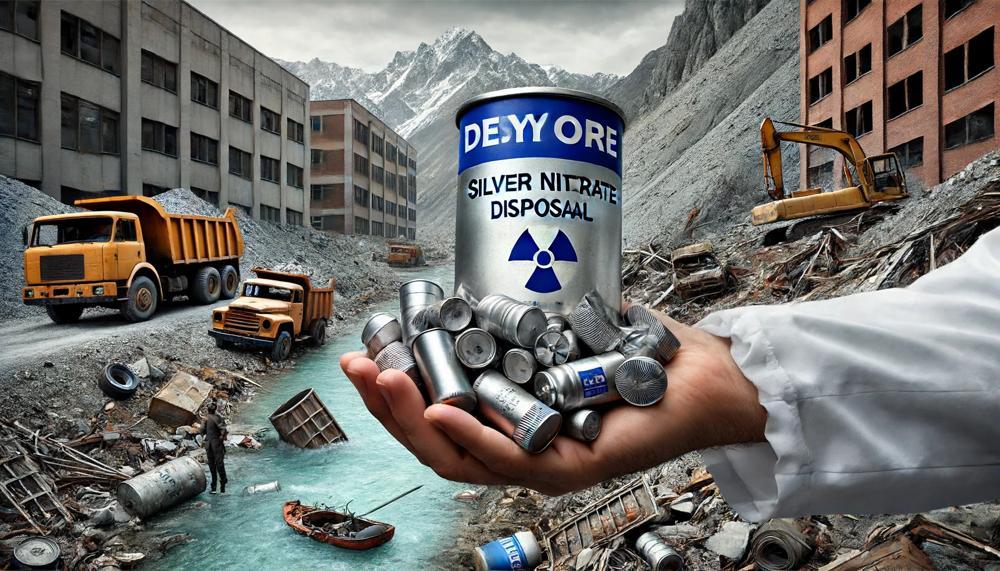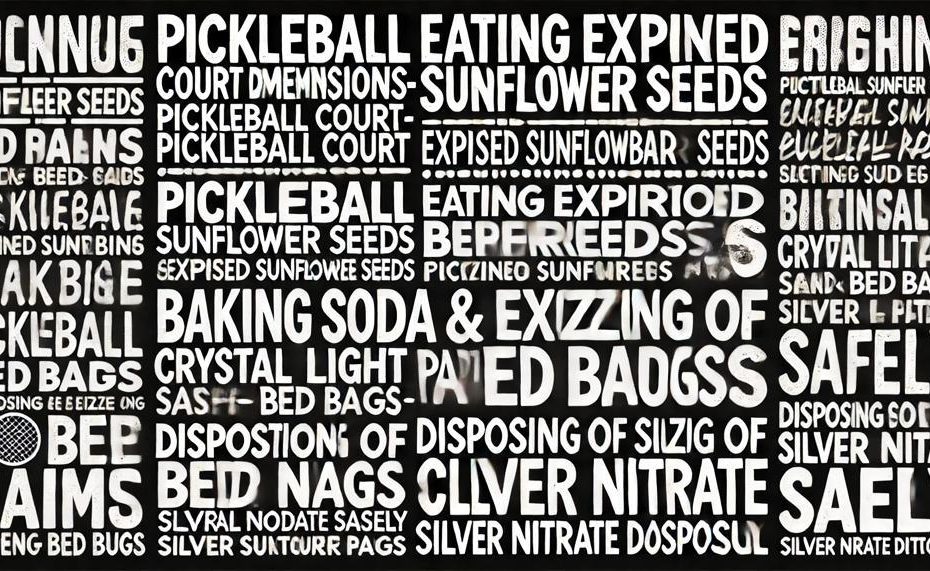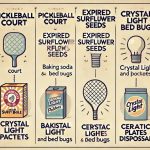When it comes to disposing of silver nitrate, it’s crucial to do so responsibly to avoid harm to people and the environment. Silver nitrate is a hazardous substance, and improper disposal can lead to serious health and environmental issues.
So, how can you dispose of it safely? The key is to never dispose of it down the drain or in the regular trash. Instead, you should mix it with a solidifying agent, such as dirt or coffee grounds, and consult your local hazardous waste disposal service for proper handling.
Key Takeaways:
- Consult Product Labels: Always check for specific disposal instructions on the product label.
- Avoid Sewer Systems: Never dispose of silver nitrate in sinks or drains.
- Solidify the Waste: Mix silver nitrate with a solidifying material like dirt or coffee grounds before disposal.
- Use Licensed Disposal Services: Contact your local waste disposal provider to handle hazardous waste.
- Separate Disposal Systems for Medical Facilities: Hospitals and clinics should have specialized disposal systems for silver nitrate.
- Proper Storage: Store silver nitrate in its original glass bottle away from light to prevent decomposition.
- Protective Measures: Proper disposal protects health, safety, and the environment.
By adhering to these guidelines, you ensure that silver nitrate is handled safely, mitigating potential risks to yourself and others while safeguarding the environment.
Contents
Standard Procedures to Dispose Of Silver Nitrate Safely
The standard procedures for safely disposing of silver nitrate include consulting product labels for disposal instructions, using solidifying agents to mix with the chemical, and properly storing it in its original container. It is important to note that silver nitrate is considered hazardous waste and should not be disposed of in the sewer system.
Firstly, it is crucial to follow the instructions provided on the product label for safe disposal. These labels often include specific guidelines for handling and disposing of silver nitrate, as well as any recommended solidifying agents to mix with the chemical before disposal.
In addition, silver nitrate should never be put into the sewer system as it can contaminate water sources and harm the environment. Instead, it should be mixed with a solidifying agent such as dirt, coffee grounds, or kitty litter before being disposed of in a sealed container. This process does not completely neutralize the silver nitrate, so caution should still be taken when handling it.
Furthermore, it is important to check with your county’s policies for hazardous waste disposal and use a licensed provider if necessary. Many areas have specific guidelines for disposing of hazardous materials, so it is important to research and follow these regulations to ensure proper disposal.
Recycling silver nitrate is also an environmentally friendly option for labs and medical facilities. This can be done through a licensed provider who specializes in recycling hazardous materials.
For hospitals and clinics using silver nitrate applicators, it is recommended to use separate containers specifically for the chemical to avoid mixing with other medical waste. This helps prevent potential hazards during disposal.
When using silver nitrate, it is crucial to carefully follow product instructions as the chemical is corrosive. It should also be stored in its original container (glass reagent bottle) and not in metal containers due to its corrosiveness. Safe storage is important as exposure to light can create harmful byproducts.
Properly disposing of silver nitrate not only protects yourself and others, but also the environment. It is important to do your research and explore local resources for appropriate disposal options.
Recycling
Silver nitrate, a potent and hazardous substance, demands careful disposal to mitigate environmental risks. Recycling it is a viable and responsible option, ensuring safety and sustainability. Here’s how to dispose of silver nitrate safely through recycling methods:
- Licensed Waste Disposal Providers: The most secure way to recycle silver nitrate is by entrusting it to a licensed hazardous waste disposal provider. These professionals have the expertise and equipment to handle and recycle hazardous chemicals properly. They follow strict guidelines to neutralize and recycle silver nitrate, preventing it from harming the environment.
| Provider | Services | Contact Information |
|---|---|---|
| Hazardous Waste Experts | Comprehensive chemical waste management, including recycling and disposal. | Visit Site |
| Clean Harbors | Specializes in hazardous waste recycling and disposal for various industries. | Visit Site |
| Veolia North America | Provides safe disposal and recycling services for hazardous materials. | Visit Site |
- Returning to Suppliers: If the silver nitrate is unused or expired, check with the original supplier or pharmacy. Many suppliers accept returns of hazardous materials and have systems in place for their safe recycling. This can often be more straightforward than dealing with specialized waste disposal companies.
- Laboratory Recycling Programs: In academic or research settings, universities and laboratories often have established recycling programs. These programs are designed to reclaim and repurpose silver nitrate, reducing waste and costs. They typically involve processes to recover silver from the solution, which can then be reused in various applications.
- Specialized Clinics and Hospitals: Healthcare facilities must adhere to stringent disposal regulations. They usually partner with waste management services that specialize in medical and chemical waste. These services include recycling programs for chemicals like silver nitrate, ensuring that they are disposed of safely and in compliance with environmental regulations.
Down the drain vs. into the soil
Disposing of silver nitrate improperly, either down the drain or into the soil, poses significant environmental and health risks. Below is a detailed analysis of these potential hazards:
| Disposal Method | Potential Risks | Consequences |
| Down the Drain |
|
|
| Into the Soil |
|
|
Legal considerations
The disposal of silver nitrate is regulated to ensure safety and environmental protection. Here’s a detailed breakdown of the legal regulations and guidelines:
| Aspect | Details |
| Classification | Hazardous Waste (EPA) |
| Prohibited Methods | No sewer or trash disposal |
| Disposal Services | Use licensed hazardous waste providers |
| Local Regulations | Check with local authorities |
| Label Instructions | Follow product label and SDS |
| Storage | Store in original or glass container, away from light |
| Institutional Protocols | Follow hospital/clinic guidelines |
| Health and Environmental Safety | Ensure safe disposal to protect health and environment |
Chemical Disposal Table

To safely dispose of silver nitrate, adhering to the guidelines specified in the chemical disposal table is paramount. Here are some common methods:
| Method | Description | Additional Notes |
| Consult Product Labels and Local Authorities | Check for disposal instructions and contact local hazardous waste disposal offices. | EPA Household Hazardous Waste |
| Use Solidifying Agents | Mix with dirt or coffee grounds to stabilize. | Prevents leakage and makes handling safer. |
| Licensed Waste Disposal Providers | Contact a professional service for larger quantities. | Waste Management Solutions |
| Specialized Containers | Use exclusive containers for hazardous chemicals in medical settings. | Ensures safe and compliant disposal. |
| Proper Storage | Store in glass reagent bottles away from light. | Prevents decomposition and formation of harmful byproducts. |
| Avoid Sewer Systems | Do not dispose of in sewers. | Prevents environmental contamination. |
| Handling Used Applicators | Treat used applicators as hazardous waste. | Residual silver nitrate can still be harmful. |
Conclusion
Disposing of silver nitrate safely is a meticulous process that demands strict adherence to guidelines to protect both human health and the environment. Silver nitrate, a potent and hazardous chemical, requires specific disposal methods to prevent contamination and harm.
To dispose of silver nitrate safely, never pour it down the drain or throw it in regular trash. Instead, mix it with a solidifying agent such as dirt or coffee grounds, which helps contain the substance and reduce the risk of leakage. This mixture should then be handled by a licensed hazardous waste disposal service, ensuring that the chemical is processed in accordance with local regulations.
Hospitals and medical facilities must use specialized disposal systems, maintaining separate containers for silver nitrate to prevent contamination with other medical waste. It’s essential to store silver nitrate in its original glass container, away from light, to prevent decomposition.
Protective measures, such as consulting product labels for specific disposal instructions and adhering to guidelines from environmental agencies like the EPA and OSHA, are crucial.





